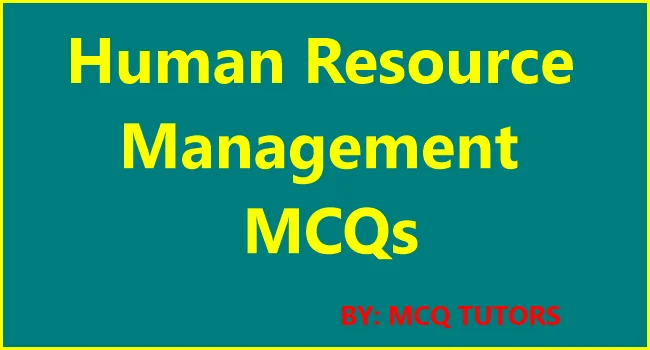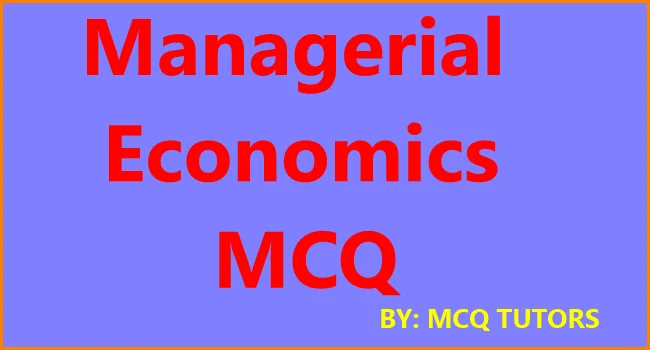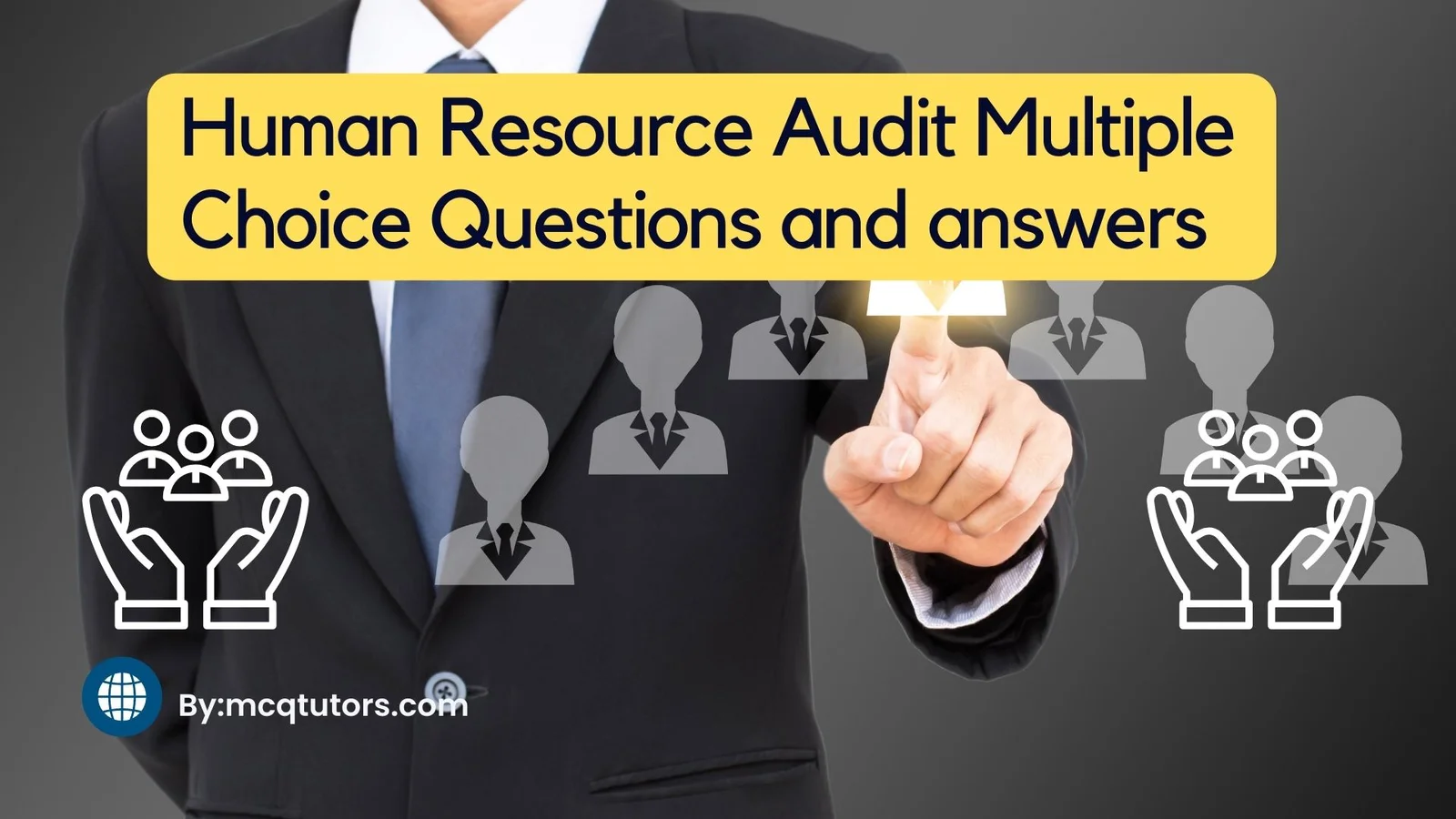MCQ on Performance Appraisal Management with Answers and Performance Management MCQ for the preparation of competitive & academic exams of Human Resource Management.
Performance Appraisal Management is an important part of any organization. It helps in evaluating the performance of the employees and ensuring that the desired goals are achieved.
To gain a better understanding of this topic, it is important to have a good knowledgebase about it. This article provides multiple-choice questions (MCQ) on Performance Appraisal Management with answers.
MCQ on Performance Appraisal Management with Answers
1. The purpose of performance management can be broadly classified into driving ___, building ___, and growing talent.
a. Results; Capability
b. Performance; Capacities
c. Output; growth
d. None of the above
Answer: (a)
2. Performance management is the way an organization ___ its employees.
a. Assesses
b. Views
c. Analyzes
d. Grows
Answer: (b)
3. In ___ organizations, performance is evaluated over a quarter or three-month period.
a. Unprofessional
b. Infrastructural
c. Large scale
d. Information technology
Answer: (d)
4. ___ demands an evaluator to order a group of employees from best to worst overall, or from best effective to worst effective in terms of certain conditions.
a. Straight ranking
b. Straight rating
c. Simple rating
d. Alternate ranking
Answer: (a)
5. The most immediate predecessors of expectancy theory were ___ (1957) with their ___ goal approach
a. Georgopoulos; path
b. Howard; objective
c. Toman and Lawrence; focus
d. None of the above
Answer: (a)
6. Scales mainly have ___ to ___ points although they can have more or less.
a. Five; seven
b. Three; Five
c. Odd; Even
d. Good; Bad
Answer: (a)
7. ___ are measuring scales whose scale points define definite and indefinite behaviors
a. BOS
b. HRA
c. BARS
d. MBO
Answer: (c)
8. Organizations have to develop ___ and leadership has to help make it work
a. Cohesive teams
b. Potent Workforce
c. Team chemistry
d. High-performance employees
Answer: (c)
9. Standards are ___ levels of performance specifications or excellence
a. Predefined
b. Distinct
c. Strategic
d. Specific
Answer: (a)
10. The members of such a team are deeply committed to one another’s personal growth and success
a. High-performance teams
b. Real teams
c. Organized teams
d. Synchronized teams
Answer: (a)
11. The first step in team building is to ___
a. Create team goals
b. Form a team
c. Establish basic rules and process
d. Understand each other’s ideas and perspectives
Answer: (b)
12. Motivation is derived from the word motive which means to ___ to action, ___ within the personnel that leads them to action
a. Drive; force
b. Arouse; urge
c. Inspire; intensity
d. None of the above
Answer: (b)
13. Performance management is basically about managing ___
a. Actions
b. Targets
c. Goals
d. Expectations
Answer: (d)
14. The result of the planning process is ___
a. KRAs
b. Performance agreement
c. KPIs
d. Job description
Answer: (b)
15. Role ___ define the overall purpose of the role, its ___ relationships, and key result areas.
a. Profiles; reporting
b. Descriptions; interacting
c. Hierarchies; linear
d. None of the above
Answer: (a)
16. ___ can be either quantitative or qualitative
a. Goals
b. Objectives
c. Targets
d. Indicators
Answer: (b)
17. ___ may deal with areas of behavior associated with core values, for example, teamwork
a. Competency frameworks
b. Performance development
c. Training goals
d. None of the above
Answer: (a)
18. In ___ performance appraisal systems, performance assessment is based on objectives
a. Formal
b. Conventional
c. Annual
d. Organized
Answer: (b)
19. Establishing a performance management plan often involves understanding the organization from ___
a. The supervisor’s viewpoint
b. The stakeholder’s expectations
c. The employees’ perspective
d. The organization mission
Answer: (c)
20. A major part of the job involved in effective performance planning happens ___ the actual meeting
a. Before
b. During
c. After
d. Throughout
Answer: (a)
21. The development plan and ___ deal with the basis and substance of every employee‟s work life.
a. The work plan
b. The performance agreement
c. The role profiles
d. None of the above
Answer: (a)
22. Which of these is not a performance dimension?
a. Focus dimension
b. Input dimension
c. Both (a) and (b)
d. Neither (a) nor (b)
Answer: (d)
23. The practice of formally appraising an individual’s performance began in ___
a. World War-I
b. The Industrial Revolution
c. The Civil War
d. The Wei-Dynasty
Answer: (d)
24. Cherrington (1987) classified ___ main purposes of performance appraisal
a. Seven
b. Five
c. Three
d. Two
Answer: (b)
25. The supervisor or manager conducting the appraisal must be trained in the use of the ___ and conducting the appraisal
a. Evaluation tool
b. Methodology adopted
c. Review process
d. None of the above
Answer: (a)
26. Under this method, the individual with the best performance is taken as an ideal employee
a. Percentile Order
b. Appraisal by Rater concerns
c. Benchmarking
d. None of the above
Answer: (b)
27. The Indian Government decided to get rid of ___ in May ___ by approving Performance Appraisal Reports
a. KPI; 2001
b. MBO; 1998
c. BARS; 1995
d. ACR; 2005
Answer: (d)
28. The number 360 degree indicates ___ appraisal
a. Comprehensive
b. Top-down and bottom-up
c. All-round
d. Shareholder
Answer: (c)
29. ___ appraisal is most advantageous when developmental needs are considered
a. Subordinate
b. Supervisory
c. Peer
d. 360 degree
Answer: (a)
30. In Appraisals, SAM indicates
a. Supervisory Assessment Management
b. Special-Purpose Annual Meeting
c. Subordinates Appraising Managers
d. Statutory Appraisal Meeting
Answer: (c)
31. In scale shrinking, the ___ of a scale is not utilized by most of the judges
a. End
b. Middle
c. Beginning
d. Description
Answer: (a)
32. Receiving negative feedback about one’s job performance is definitely ___
a. An unpleasant activity
b. A Perspective-changing experience
c. An important module of review meetings
d. None of the above
Answer: (b)
33. There are ___ levels of performance feedback
a. Four
b. Five
c. Six
d. Multiple
Answer: (c)
34. ___ is not something that always comes naturally to people
a. Commitment
b. Involvement
c. Engagement
d. Teamwork
Answer: (d)
35. Self-directed feedback is one of the best means of identifying and understanding ___
a. Perceptual differences
b. Performance parameters
c. Improvement plans
d. None of the above
Answer: (a)
36. The plan-do-review-revise cycle takes place over ___ time scales and at ___ levels.
a. Five; three
b. Different; many
c. Four; Six
d. Multiple; varied
Answer: (b)
37. Performance management systems are ___ of them only reward employees for good performance
a. Effective
b. Ineffective
c. Standardized
d. Equitable
Answer: (b)
38. PMF represents
a. Periodic Manager’s Fraternity
b. Performance Management Framework
c. Performance Measurement Fiscally
d. None of the above
Answer: (b)
39. Generally the failure of the previous system is more because of ___ problems rather than design problems.
a. Structural
b. Organizational
c. Implementation
d. Hierarchical
Answer: (c)
40. Organizational support may be in the terms of:
a. Work Conditions
b. Resources
c. Both (a) and (b)
d. Neither (a) nor (b)
Answer: (c)
41. Output or result dimension is the most acceptable, ___ and ___ dimension of performance
a. Visible; measurable
b. Important; vital
c. Quantifiable; simplistic
d. None of the above
Answer: (a)
42. Costs may be financial or with respect to ___ and effort
a. Quantity
b. Quality
c. Time
d. None of the above
Answer: (c)
43. In lead relationships, ___ are made on the basis of performance assessment
a. Teams
b. Decisions
c. Evaluations
d. Allotments
Answer: (b)
44. A maintenance manager is ___ or rewarded when the maintenance ___ are going down.
a. Evaluated; overheads
b. Promoted; off-times
c. Acknowledged; prices
d. None of the above
Answer: (c)
45. During the ___ phase, the general human resource focus is on the maximization of productivity.
a. First
b. Third
c. Start-up
d. Maturity
Answer: (c)
46. ___ refers to assessments among jobs or skill levels within an organization
a. External assessment
b. Equitable comparisons
c. Role profiling
d. Internal alignment
Answer: (d)
47. Pay bands should be ___ and competencies should be included as variables determining ___ pay levels.
a. Broader; base
b. Shortened; Generic
c. Reviewed; Equitable
d. None of the above
Answer: (a)
48. ___ is a term used to explain learning, which has been acquired through experience
a. Implied learning
b. Operant conditioning
c. Classical conditioning
d. Contemporary learning
Answer: (c)
49. The most important ingredient that helps us to remain ethical is trying to behave ___
a. Strategically
b. Functionally
c. Ethical
d. Rationally
Answer: (c)
50. Performance appraisals go much more smoothly where there are ___ objectives and ___ for evaluation.
a. Defined; specifications
b. Clear; criteria
c. Specific; measurements
d. None of the above
Answer: (b)
Conclusion
Performance appraisal management is an important tool that can help organizations identify areas of improvement and reward employees for their hard work. A thorough understanding of the concept, from both a theoretical and practical standpoint is essential in being able to properly utilize this tool.
Thanks for visiting our website, if you like the post on MCQ on Performance Appraisal Management with Answers, please share on social media.
Read More:
- International Marketing Management MCQs
- Human Resource Management MCQs
- Common General Knowledge MCQs
- Performance Management MCQs
- Managerial Economics MCQs




